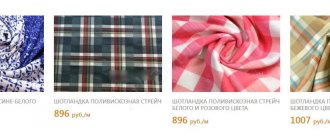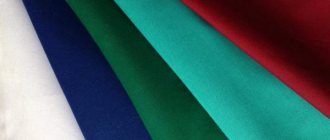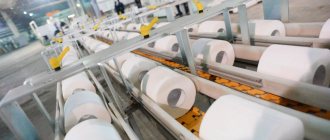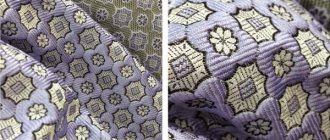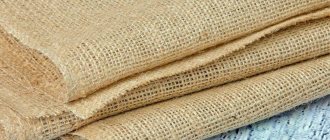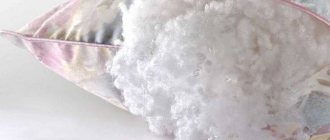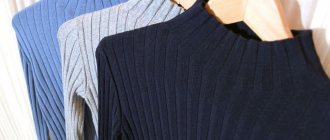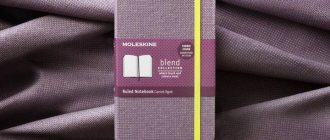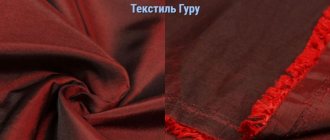Characteristics and classification
Industrial fabrics can be divided according to different characteristics - for example, by purpose. Then they will be with a special impregnation that prevents rotting, getting wet or burning. The function is in its name.
By composition
Depending on the composition there are several types:
- Mixed natural. Usually consists of two components - linen and cotton. An excellent example is tarpaulin used in the manufacture of tents and workwear.
- All natural cotton. Typically used for sewing rags to remove dirt in production.
- Synthetic fibers are made from the fabric of the same name. The peculiarity is its density and resistance to mechanical loads. Can be used for industrial cleaning or for sewing clothes.
Technical heat-resistant fabrics are produced according to special standards and have quality certificates.
| Mixed natural | Natural cotton | Synthetic |
| Clothing, tents, awnings for special equipment | Rags | Rags, overalls |
According to manufacturing technology
Material from flax and tarpaulin is made by impregnating the components. For example, fire-resistant ones are made for firefighters, and moisture-resistant ones for the military.
Synthetic options do not have special impregnation, but are produced with wear resistance in mind. And in the production of cotton, two main rules are observed: hygroscopicity and lack of lint.
By purpose
By purpose it is divided into the following types:
- Tarpaulin is made using special impregnations and is used as a heat-resistant, moisture-resistant product.
- Synthetics can be used for sewing covers or clothing. Dirt-repellent properties.
- Cotton is used for harvesting production.
Ticket No. 8 (1) Technological properties of fabrics
The technological properties of fabrics include properties that influence the processing of fabric at all stages of sewing production.
Cutting resistance - depends on the softness (hardness) of the material; The toughest are made from synthetic fibers, the softest from protein fibers (wool, natural silk); influences the number of layers in the flooring when cutting. Sliding – manifests itself during cutting and stitching, during wearing; depends on the surface structure; useful for lining fabrics. Shrinkage is a change in the linear dimensions of a material after wetting, washing, ironing, and also under the influence of high humidity. Fabric shrinkage is determined by length and width. It is considered positive if there is a decrease in size, and negative if the size of the material increases. Shrinkage is divided into local and general. With local, there is a reduction in size in a separate area (tightening), with general, there is a reduction in size along the entire length or width of the fabric. Shrinkage is determined after washing or soaking. Shrinkage is expressed as a percentage of the original length. For woolen fabrics and knitted fabrics, a soaking process is performed. Shrinkage is different for all fabrics and depends on the fiber composition. Reasons for shrinkage: 1. disappearance of elastic deformation in fibers, yarn, fabric that occurs during spinning, weaving, finishing; 2. an increase in the cross-section of the threads due to swelling of the fibers, which leads to an increase in the bending of the threads of the opposite system; 3. straightening the threads of one system at the expense of another. Shrinkage standards have been established for textile materials. Depending on this, all fabrics are divided into three groups: 1) non-shrink; 2) low-shrinkage; 3) shrinkage. Shrinkage complicates the cutting and sewing processes. Damage to the fabric by the needle (cutting through) - during the sewing process, the needle, passing through the fabric, can partially or completely destroy the thread with its tip. Partial destruction is called hidden cutting, complete destruction is called obvious cutting. Cutting leads to weakening of the material in the seam area, and in knitwear – to the unraveling of loops. Affects appearance, strength, service life. Depends on the structure of the fabric, on the nature of the finishing, as well as on the correspondence of the number of the needle, threads and the condition of the needle. The cutting of the fabric is determined experimentally by stitching a sample without a thread. The correct selection of needles according to the thickness of the fabric is required.
The spreading of threads in seams is the mixing of threads of one system under the influence of external forces. Expansion occurs in tight-fitting clothing, the seams of which experience great tensile forces, which leads to their disruption, i.e., it manifests itself during wear. Depends on the fiber composition, the structure of the yarn and fabric, and the nature of the finish. Depending on the expansion rate, fabrics are divided into three groups: easily expanded, moderately expanded, and not expanded. Shedding is the phenomenon of threads falling out of open cuts. Shedding depends on the structure of the fabric, the type of weave, the nature of the surface of the threads, and their rigidity. Shedding is characterized by the amount of force required to shed a two-millimeter layer of threads from a cut of a fabric sample. Shedding affects the seam width and thread consumption (overcasting). Based on their resistance to fraying, fabrics are classified into easily, moderately and non-fraying fabrics.
Shaping during WTO (forming ability) is the ability of the fabric to take and fix the shape given to the parts of the garment and maintain it during wear. The manifestation of this property is a prerequisite for creating a spatial form. It can be imparted in two ways: 1) changing the size of individual sections of clothing parts by ironing and pulling during WTO; 2) development of the design of the product with its maximum division into parts. The formability of materials varies and depends on the fibrous composition. Materials capable of forming a spatial shape under the influence of HTO include wool (especially!) and cellulose. The formability of materials influences in-line processing. Compliance with the WTO regime is required depending on the fiber composition of the fabric.
The WTO parameters include: – temperature of the ironing surface; – moisture content in %; – pressure of the heated surface; – exposure time in seconds.
Ticket No. 8 (2) Organoleptic method for determining the fibrous composition of fabric
Methods for determining fiber composition : laboratory (
with the help of chem.
reagents); and organoleptic (using the senses - vision, touch, smell).
The organoleptic method involves the following sequence of actions:
1. Evaluation of fabric by appearance : color (important for harsh fabrics), shine (chemical fibers can be sharp, but natural fibers do not; light pleasant shine - natural silk, etc.), surface smoothness (if the surface is without villi means the fabric is either made of natural silk or chemical threads, if with villi, the fabric contains yarn, etc.), etc.
2. Evaluation of the fabric by touch : soft, hard, harsh, woolly, silky, etc.
3. Evaluation of warp and weft threads : threads or yarn, structure of threads or yarn, comparative strength of threads or yarn in dry and wet conditions (if the strength when wetted decreases significantly - this is a sign of artificial fibers that significantly lose strength in a wet state), type the end of the thread when it breaks (when cotton yarn breaks, there is a fluffy tassel at the end; when a natural silk thread breaks, there is a connected mass of fibers at the end; when linen yarn breaks, at the end there is a tassel of pointed fibers of different lengths and thicknesses; when a thread of chemical fibers breaks at the end fibers flying in different directions);
4. Burning of warp and weft threads . Warp and weft threads, as well as threads that differ in color and shine, are examined separately. The results of the combustion study are conveniently presented in the form of a table. After conducting research on items 1 – 3 and clarifying the nature of combustion of all components of the warp and weft of item 4, the final conclusion is made: the fabric is homogeneous in its fibrous composition (heterogeneous, mixed or mixed-heterogeneous).
Ticket No. 9 (1) Properties of knitted fabrics (option 1)
Knitwear is a knitted product consisting of loops connected horizontally and vertically, obtained from one or more threads. The loops of the knitwear are located in its plane along, forming loop columns and across, forming loop rows . According to the number of threads involved in the formation of loops of one transverse row, knitwear is divided into cross-knitted (waist) and longitudinally knitted (warp-knitted).
a- cross-knitted - a transverse row is formed by one thread;
b – warp knitted – a transverse row is formed by a system of threads (warp), with each warp thread in each subsequent row moving from one loop column to another.
Types and uses
Typically, each material protects against several factors. And sometimes each of the components serves several purposes. In the article we will look at which one it serves and for what purposes.
Aramid
This material is made from heat-resistant polyamides. Used for sewing clothes for people working in extreme conditions. Resistance to abrasion, mechanical stress, resistance to temperatures. Doesn't take much time to make or maintain.
Note! Over time, after several washes and use for several months, the product loses its strength. Therefore, it is recommended to combine.
Tarpaulin
This is a material consisting of several types of raw materials - cotton, linen, synthetics. -It is usually treated with additional impregnation, which has fire-resistant, water-resistant or other properties. Used in the manufacture of covering components and workwear. Can even be used when sewing gloves or special shoes.
Basalt
This technical fabric is made from basalt threads. The weave of the threads varies. Does not conduct heat, practically does not burn. Resistance to rotting, acids, alkalis.
Note! Raw materials are used in aircraft manufacturing and construction.
Rags
Made from terry or cotton. It is characterized by hygroscopicity, softness, and, according to GOST, complete absence of lint. Used for wiping hands and production equipment from dirt and oil.
Author:
Anastasia Kukushkina
I hope you enjoy the article I have prepared for you! If you find errors in it, write to me about it! I will answer any questions you have, ask them!

